| Columns Retired Columns & Blogs |
Spendor SA1 loudspeaker Measurements
Sidebar 3: Measurements
A speaker as small as the Spendor SA1 can't be expected to offer a high voltage sensitivity; my measurements indicated that it was a little more sensitive than the BBC LS3/5a, at 83dB(B)/2.83V/m, though this is 1dB lower than specified. Offsetting the Spendor's need for volts is its high impedance. Fig.1 shows the speaker's impedance and electrical phase, the former plotted on a wider 5dB/division scale rather than our usual 2dB/division. The sealed enclosure is tuned to 80Hz, indicated by the impedance peak of 46 ohms at that frequency. The impedance drops below 10 ohms only between 125 and 575Hz, reaching a minimum value of 6.2 ohms at 200Hz, but otherwise remains very high.
The traces in fig.1 are free from the small wrinkles that would imply the existence of cabinet resonances. However, examining the panels' vibrational behavior with a simple plastic-tape accelerometer did uncover a strong mode on the sidewalls (fig.2). At 516Hz, this may well be too high in frequency to have any subjective consequences. (The higher in frequency a resonance, the more quickly it will decay and the less likely it is to be fully excited.) I could easily hear this mode with a stethoscope while I played the half-step–spaced toneburst track from Editor's Choice (CD, Stereophile STPH016-2), not only as the tonebursts passed through its region but also as "ghosts" with higher-frequency bursts. But even after I knew about the existence of this resonance, I couldn't detect with music any lack of clarity in the SA1's upper midrange that might have resulted from its presence.
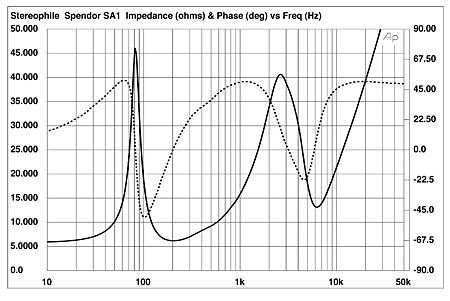
Fig.1 Spendor SA1, electrical impedance (solid) and phase (dashed). (5 ohms/vertical div.)
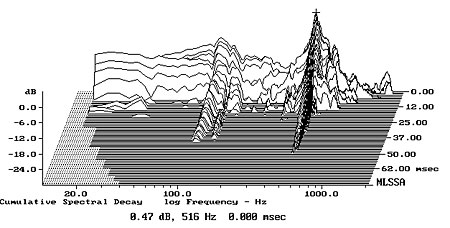
Fig.2 Spendor SA1, cumulative spectral-decay plot calculated from output of accelerometer fastened to center of side panel (MLS driving voltage to speaker, 7.55V; measurement bandwidth, 2kHz).
Above 300Hz, fig.3 shows the SA1's quasi-anechoic response, averaged across a 30° horizontal angle centered on the tweeter axis, measured with DRA Labs' MLSSA system and a calibrated DPA4006 microphone. Below 300Hz, there is the usual rise in the upper bass due to the nearfield measurement conditions used in this region. The Spendor will actually be flat to 125Hz or so, rolling off below that frequency to reach its –6dB point at the sealed-box tuning frequency of 80Hz. The midrange and treble regions are impressively even, though with perhaps a slight excess of energy in the tweeter's bottom octave. The grille introduces some unevenness in the mid-treble, and is best left off for serious listening.
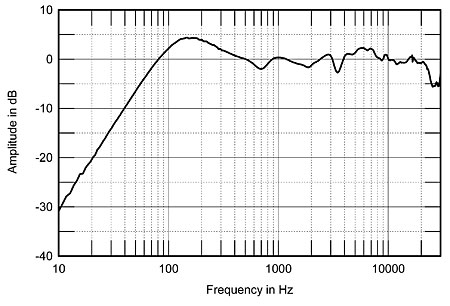
Fig.3 Spendor SA1, anechoic response on tweeter axis at 50", averaged across 30° horizontal window and corrected for microphone response, with complex sum of nearfield woofer and port responses plotted below 300Hz.
The Spendor SA1's horizontal dispersion (fig.4) is wide and even, though with a slight depression off-axis at the top of the region covered by the woofer. In the vertical plane (fig.5), a deep suckout develops more than 5° above the tweeter axis; this speaker is best used with stands high enough to place the listener's ears on or just below the tweeter. The suckout is centered at 4.3kHz, which suggests that this, rather than the specified 4.8kHz, is the actual crossover frequency.
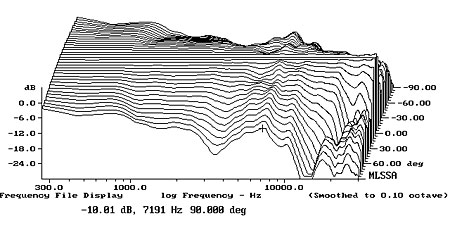
Fig.4 Spendor SA1, lateral response family at 50", normalized to response on tweeter axis, from back to front: differences in response 90–5° off axis, reference response, differences in response 5–90° off axis.
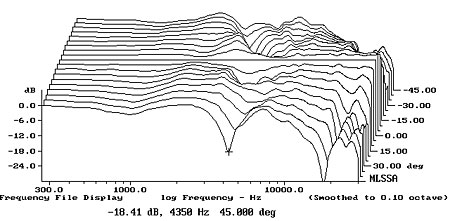
Fig.5 Spendor SA1, vertical response family at 50", normalized to response on tweeter axis, from back to front: differences in response 45–5° above axis, reference response, differences in response 5–45° below axis.
The red trace in fig.6 shows how the Spendor's response and dispersion measurements add up in the listening room. (I derive this graph by averaging 20 measurements taken for each speaker in a rectangular grid measuring 36" by 18" centered on the position of my ears in my listening chair. I used an Earthworks omni microphone and a Metric Halo ULN-2 FireWire audio interface, in conjunction with SMUGSoftware's Fuzzmeasure 2.0 running on my Apple laptop.) The SA1's in-room response is remarkably even overall, though with a slight lack of energy at the top of the woofer's passband, as expected from the dispersion plots. The gentle rolloff above 7kHz is primarily due to the increasing degree of absorption offered by the room's furnishings in this region. At the other end of the spectrum, the small peaks and dips between 100 and 500Hz are due to room acoustic modes that have not been eliminated by the spatial averaging. The Spendors' LF output rolls off below 100Hz, as expected from the high woofer-tuning frequency.
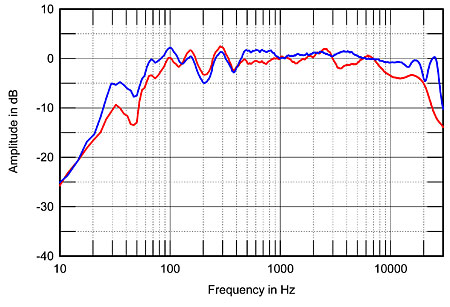
Fig.6 Spendor SA1, spatially averaged, 1/6-octave response in JA's listening room (red); spatially averaged, 1/6-octave response of PSB Imagine B (blue).
For comparison, the blue trace in fig.6 shows the spatially averaged in-room response of the PSB Imagine Bs, taken with the speakers in the same positions as the Spendors, which is why the lumpiness in the lower midrange is identical. The PSB's ported tuning and larger enclosure results in a significantly greater degree of upper-bass energy in the room, with the 32Hz region (which is where my room has its lowest-frequency resonance) usefully higher in level than with the Spendors. The PSBs have more energy than the SA1s both between 3 and 5kHz (which is why I found them to sound brighter) and above 8kHz (which is why the British speakers sounded a little less "airy").
In the time domain, the SA1's step response on the tweeter axis (fig.7) indicates that the tweeter is connected in inverted polarity. (Ignore the small wrinkle in this graph just before 7.5ms, which is the first reflection of the HF unit's output from the ceiling; inclement weather meant that I had to perform these measurements indoors.) Though the tweeter's output (the sharp down/up/down spike at 3.75ms) leads the woofer's (the positive-going right-triangle starting at 4ms), it is smoothly integrated with it, confirming the good match between the drive-units' outputs seen in fig.3. The Spendor's cumulative spectral-decay plot on the tweeter axis (fig.8) is superbly clean overall, though there is a low-level area of delayed energy evident in the top octave of the woofer's passband.
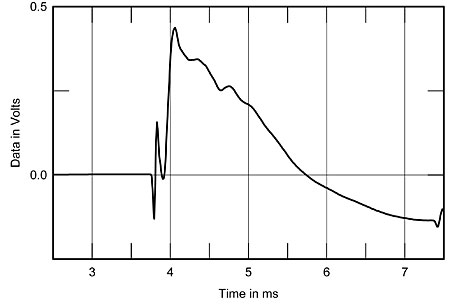
Fig.7 Spendor SA1, step response on tweeter axis at 50" (5ms time window, 30kHz bandwidth).
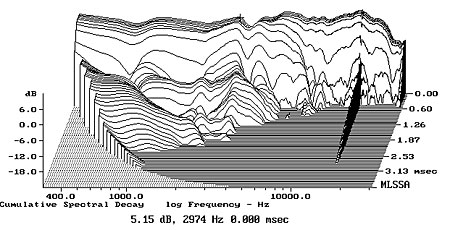
Fig.8 Spendor SA1, cumulative spectral-decay plot on tweeter axis at 50" (0.15ms risetime).
The Spendor SA1's low sensitivity and limited LF extension are to be expected from its diminutive size, but offsetting those facts to some extent, it is very easy to drive. Overall, the speaker offers excellent measured performance, as might be expected from its pedigree—John Atkinson
- Log in or register to post comments




































